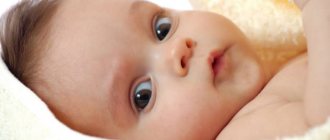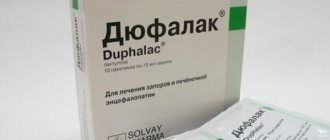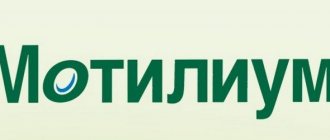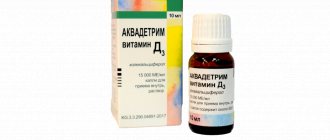ARVI in children
The group of acute infections caused by viruses in children includes several diseases caused by various pathogenic agents.
Influenza is characterized by an epidemic rise in incidence. This means that during the most favorable season for the reproduction of the virus, the disease occurs in the form of outbreaks in groups. Several children are sick at once. The establishment is usually closed for quarantine. In such a situation, the use of Kagocel is relevant both for the treatment of viral colds in sick children, and for the purpose of prevention in those who were in a quarantine group.
The flu is characterized by an acute onset, with the temperature immediately rising to high levels. The child develops chills, despite the high body temperature, the baby complains that he is cold. Catarrhal phenomena are weakly expressed. A few days later, rhinitis, pharyngitis, and inflammation of the mucous membrane of the trachea and bronchi appear.
Influenza is dangerous because even with a favorable course, complications are possible . Influenza of moderate severity occurs with severe intoxication, the appearance of croup, which makes breathing difficult, and alveolar pulmonary edema is possible. With severe flu, symptoms such as dizziness, convulsions, and hallucinations are possible. In the hypertoxic form, meningoencephalic and hemorrhagic syndromes quickly develop. The skin bleeds easily, and a star-shaped rash appears on the body, characteristic of meningitis.
The main complications are associated with the penetration of the virus into the bloodstream and other organs and tissues: the brain, soft meninges, nerves. In addition, an infection of bacterial etiology may occur. Then pneumonia, tracheitis, and otitis of non-viral etiology occur. To avoid complications, you need to monitor the course of the disease from the first day of influenza and contact your pediatrician to prescribe etiotropic therapy. Most often, when the child’s immunity is not weakened, the child’s body copes with the infection, and the flu is mild.
With adenovirus infection, exudative phenomena predominate. The face, eyelids, lips, mucous membranes of the mouth and nose are sharply swollen, characterized by copious mucous discharge from the nose and a wet cough. Possible damage to the conjunctival membrane of the eye and involvement of the lymphatic system. In children, the anterior and posterior cervical lymph nodes and pharyngeal follicles enlarge. Some children with adenovirus infection complain of abdominal pain, nausea, vomiting, and diarrhea.
With parainfluenza, in addition to the general symptoms of intoxication, inflammatory phenomena of the upper respiratory tract occur. The disease in children is characterized by the development of false croup. The presence of croup is indicated by a child's rough barking cough, noisy breathing associated with laryngeal stenosis, and a change in voice timbre. If a child’s skin becomes cyanotic and breathing becomes arrhythmic, you should urgently call an ambulance.
The treatment algorithm for acute infections caused by a virus includes basic therapy, syndromic and etiotropic treatment.
Basic therapy:
- Strict bed rest until body temperature and general condition normalize.
- A special diet rich in protein, plant and dairy products.
- Drink plenty of fluids. Berry and fruit drinks and carbonate mineral waters are especially useful.
- Vitamin C, multivitamin complexes.
- Drugs that facilitate the removal of mucus from the respiratory tract, including herbal remedies.
- Steam inhalations.
- Antihistamines.
Syndromic therapy – fight against fever, rhinitis, cough. If the body temperature is high, it is necessary to put the child in bed and open the window. There are two types of hyperthermia. White hyperthermia is accompanied by a feeling of chills, pale skin, cold hands and feet. With red hyperthermia, the sensation of heat, redness and moisture of the skin is disturbing. In case of white hyperthermia, it is necessary to warm the child and administer antispasmodics (No-Shpa, Papaverine). Then you should determine the temperature level. If it does not exceed 38 degrees, the child is prescribed plenty of fluids and, if necessary, antipyretic tablets (Paracetamol, Aspirin).
At temperatures above 38 degrees, it is necessary to administer a lytic mixture (Analgin, Suprastin, Papaverine) by specially trained medical personnel. If the child does not have chills, physical cooling techniques can be used.
For dry rhinitis, the main treatment is antiviral drugs. For rhinitis with serous discharge from the nose, it is necessary to drip vasoconstrictor drugs. For purulent rhinitis, antibiotics are prescribed.
Expectorants are effective in treating dry cough. For wet cough and thick sputum, mucolytics are used. For persistent and frequent coughs, medications are prescribed that block the cough center. Etiotropic treatment of ARVI includes taking antiviral drugs (for example, children's Kagocel and its analogues).
How does the active substance work?
The active substance is a powder insoluble in water and alcohol that begins to work in the small intestine. It breaks protein bonds and thereby prevents viruses from entering cells. This action prevents infectious agents from multiplying.
The laboratory-obtained drug actively stimulates immune reactions in the body and promotes the production of alpha and beta interferons in all cell populations that should be involved in the body's response to viral penetration.
Taking 1 tablet of Kagocel increases the production of interferons to maximum levels after two days, after which their circulation in the blood continues for up to 5 days.
This effect of Kagocel on the body allows it to be called an antiviral agent. Viral infections in children can be prevented with Kagocel, which is given to a child if he has reached the age of 3 years. But the drug should be used only on the recommendation of a pediatrician.
Kagocel does not have an international non-proprietary name, and there is no analogue. In its action, this drug is similar to other drugs that have various active ingredients against viruses. These include:
- Arbidol;
- Amizon;
- Amiksin;
- Tamiflu.
All of them have a pronounced effect against viral infection and stimulate the production of late interferon in cells.
Pharmacological properties of Kagocel
Kagocel is part of the pharmacological group of antiviral medications. Produced by Russian in the form of uncoated tablets. The drug can be taken by adults and children from the age of three. Each Kagocel tablet contains 12 mg of the main pharmaceutical substance and auxiliary nutritional supplements. There are 10 tablets in a package.
The main pharmacological effect of Kagocel is antiviral. The mechanism of action of the active substance is associated with the indication of the immune system, due to which the body produces a larger amount of its own interferons that destroy the virus. As a result, the concentration of all clones of lymphocytes, macrophages, and neutrophils increases in the bloodstream. The effect is achieved 2 days after taking the first Kagocel tablet. Induced interferons remain in the blood for another week.
In case of immunodeficiency, Kagocel restores immunity. After taking the second tablet, the death of viruses is accelerated, the reproduction of pathological agents and the formation of radicals that damage the cells of the body are stopped.
It is advisable for children to take Kagocel, since the immune system in the child’s body is not fully formed , and in case of severe infections, drug support is needed to produce more interferons. At the same time, Kagocel is non-toxic, does not accumulate in the body, and does not have harmful properties.
After taking Kagocel orally per os, the main component is actively absorbed in the gastrointestinal tract, reaches target organs and implements pharmacological effects here. The active substance practically does not pass through the blood-brain barrier and accumulates in hepatocytes. Most of the metabolites are excreted by the intestines. Excretion of Kagocel in feces makes it possible to use the drug in children with kidney pathologies. Kagocel is effective when prescribed in the first 2-4 days from the onset of an infectious disease. The medicine can be used for prophylactic purposes.
Composition, effect on the children's body
Kagocel is an antiviral agent with low toxicity . Pediatricians note its fairly high safety. The medicine acts equally effectively at any stage of the disease.
The composition includes a plant active substance - a copolymer, which is extracted from cotton.
The active substance stimulates the body's production of interferon protein. Interferon functions include:
- preventing the spread of viruses;
- restoration of damaged cells;
- increasing cell immunity to viral attacks;
- relieving cold symptoms;
- increasing immunity.
The advantage of this product is that it does not accumulate in the body and does not cause side effects. The medicine is released in tablets for oral administration. Each tablet contains 12 mg of active ingredient.
Read about how the drug Tonsilgon in drops for children works for the treatment and prevention of acute respiratory viral infections and influenza.
And this article contains complete information about cefekon suppositories for children, instructions for use, and average prices for the drug.
Read all about the antiviral drug Laferobion in suppositories for children - instructions for use, reviews from parents you will find here:.
Admission rules
At what age do you have to take Kagocel? Kagocel can be given to a child from the age of three under the strict supervision of a pediatrician . Recommended treatment regimen for children from three to six years of age: 1 tablet after meals, twice a day for the first two days, then 1 tablet per day for the next 2 days. The child takes the pills for 4 days.
Kagocel therapy regimen for children over six years of age: 1 tablet three times a day for the first 2 days, then 1 tablet twice a day for another 2 days. Dosage for children of Kagocel to prevent ARVI: 1 tablet for 2 days, then skip 5 days and again give 1 tablet for 2 days. This course is repeated several times, but its duration should not exceed 2 months.
No cases of overdose with Kagocel have been reported. When taking large dosages, children may experience symptoms similar to side effects. In such a situation, it is necessary to induce a gag reflex and call your doctor or emergency medical services.
How often can Kagocel be given to children?
Kagocel is classified as a synthetic type medicine.
Its action is ensured by the active component kagocel - a substance synthesized from polyphenolic compounds of cotton seeds and cellulose of the carboxyl group. Pharmacists position Kagocel for children as a medicine from the group of interferon inducers, an endogenous protein with a specific action.
The high effectiveness in the fight against viral infections, which is distinguished by the medicine, is due to its ability to stimulate the child’s body to produce interferon, which increases the resistance of cells to the effects of microbes.
The antiviral activity of interferon makes it possible to block vital processes, including the reproduction and spread of pathogenic microorganisms. Moreover, if you treat a child over three years old with Kagocel, you can not only neutralize microbial cells in his body, but also strengthen his immune potential.
Thus, the use of Kagocel’s therapeutic capabilities to treat children makes it possible to fight the virus naturally—with the forces of the body itself.
A valuable pharmacological property of the drug is the possibility of complex therapeutic effects:
- antiviral activity;
- suppression of bacterial activity;
- increasing and strengthening the child’s protective potential;
- protection from the harmful effects of ionizing radiation.
From a medical point of view, for children over 3 years old, Kagocel is one of the most effective and safe medicines, since its action is based on the use of resources inherent in the body.
Mechanism of action of the active component of Kagocel
When the active substance Kagocel penetrates the child’s body, the production of natural proteins alpha and beta interferon is activated, acting simultaneously in several directions:
- suppresses the synthesis of viral particles;
- awakens genes that protect cells from pathogens;
- prevents the spread of germs;
- promotes the destruction of viral microorganisms;
- increases cell resistance to damage by viruses and bacteria;
- enhances the reaction of the defense system.
Taking Kagocel ensures intensive production of interferon by all types of particles involved in creating a response by the immune system - T- and B-lymphocytes, fibroblasts, granulocytes and endothelium.
The activity of interferons is directed against viruses and is expressed in the activation of enzymes that inhibit the activity of viral RNA. Along with this, endogenous proteins prevent the appearance and development of tumor cells.
Pediatricians recommend giving Kagocel to children 3 years of age, as they consider the drug the best solution for the complete and harmless treatment of most viral infections.
Kagotsela has also proven itself well as a preventative against infections caused by viral invasion. The medicine is recommended for use by children and adults whose immune function is weakened, as well as by people forced to come into contact with infected patients.
Pharmacokinetic characteristics
The drug Kagocel is available in only one pharmaceutical form - in the form of white tablets with brown spots, each of which contains 12 mg of the active compound. Kagocel also contains various auxiliary components and the Ludipress therapeutic complex.
According to the instructions, the drug is recommended for children over 3 years old. You can take Kagocel only on the recommendation of a doctor.
After Kagocel is taken internally by a child, the drug enters the intestines, where it is absorbed. The peak concentration of the active compound in the bloodstream is observed after four hours, and the maximum increase in interferon levels is achieved after two days and remains at this level for another five days.
A characteristic feature of Kagocel is the absolute absence of toxic effects, provided that it is taken in therapeutic doses.
The maximum amount of the active substance Kagocel for children is observed in the cells of the abdominal organs, as well as in the lymph nodes about a day after the active compound penetrates the bloodstream.
Only a small amount of the active compound enters the tissues of the nervous system, since its molecules are too large to pass through the blood-brain barrier. It is important that Kagocel for children is distinguished by its inability to accumulate in tissues.
Approximately 20% of the dose taken by the patient penetrates into the blood. At the same time, a fifth of this volume is associated with organic substances, and the remaining part of the drug is in the bloodstream in free form.
Complete removal of Kagocel from the body occurs naturally - the main part through feces and approximately 10% through urine. Therefore, the drug can be used even by children with kidney pathologies.
Rules for taking Kagocel for children
Kagocel therapy is relevant for any age group, starting from three years. The main thing is that a 3-year-old child should be given Kagocel strictly according to the instructions or recommendations of the pediatrician.
For very young children, it is recommended to choose other pharmaceuticals . This is explained by the fact that the drug is available only in the form of tablets, the administration of which is too difficult for children. A small child is unable to swallow a tablet, and pharmacists do not recommend grinding the drug into powder.
In addition, during the first three years of life, a child's immune system is still developing, and interference with immunomodulatory drugs can disrupt natural processes.
It is also possible that the child’s immune system becomes accustomed to the additional help of medications and reduces its functionality in the absence of additional stimulation.
In order for Kagocel to provide the necessary health benefits to children aged three years, the following recommendations should be followed:
- Treatment of infections . When the first signs of the disease appear, take 12 mg of Kagocel twice a day for two days. Next, a one-time dose of pills is recommended. The optimal duration of treatment is four days. The full course of therapy includes six tablets;
- Prevention . Kagocel is taken cyclically - one pill once a day. Each cycle is seven days. This is followed by a five-day break. The total duration of the course of prevention of viral infections can be several months. The minimum duration of the course of preventive treatment is a week.
Therapy with Kagocel for children from six years of age follows a different scheme : three doses of one tablet are recommended in the first two days. Then the child needs to take 12 mg of Kagocel twice a day. The full therapeutic course is four days.
A distinctive feature of the drug is its high intensity of action at any stage of the disease. It is appropriate to take Kagocel not only when early symptoms appear, but also in cases where the infection has taken complex forms.
Special instructions for taking Kagocel by children
In the vast majority of cases, children tolerate Kagocel quite well. The development of side effects is extremely rare.
However, the possibility of developing an individual reaction to the constituent substances of the drug cannot be excluded. Doctors do not recommend giving Kagocel to a three-year-old child who is prone to allergies to the components in the drug.
In addition, contraindications to treatment with the drug include:
- genetically determined galactose intolerance, with impaired absorption of the substance;
- any types of lactase deficiency;
- pregnancy;
- lactation;
- age up to three years.
Unlike older generation drugs, Kagocel helps against all types of viral pathogens and does not cause resistance in pathogenic microorganisms, since it is not an antibiotic.
But if taking the drug is contraindicated for any reason, it is recommended to consult a pediatrician and, with his help, choose a Kagocel analogue with optimal characteristics.
Sources:
Vidal : https://www.vidal.ru/drugs/kagocel__8916 GRLS : https://grls.rosminzdrav.ru/Grls_View_v2.aspx?routingGuid=91c34441-e4a8-4d50-b1bd-03a3bc8e3523&t=
Found a mistake? Select it and press Ctrl + Enter
Source: https://detki.shukshin-net.ru/kak-chasto-mozhno-davat-kagocel-detjam/
Indications for the drug Kagocel
The annotation indicates the following indications for the use of Kagocel:
- flu;
- ARVI and acute respiratory infections;
- herpetic infection, including the genital form;
- urogenital chlamydia;
- for the prevention of influenza.
Kagocel helps with flu
The description does not indicate that Kagocel is indicated for rotavirus infection. Therefore, the question of its use for intestinal flu should be decided by the doctor after examining the patient.











